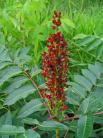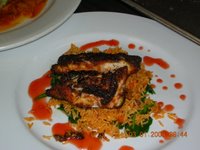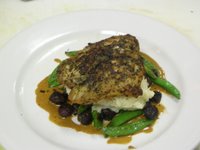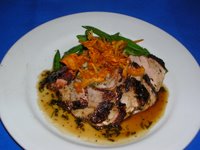encyclopedia of spicesOne of the guys asked me about the spice Sumac, because we use it in a couple of dishes at the resturant The link above is a great site. Check it out!!!!!
Sumac Rhus coriariaAnacardiaceae
This spice comes from the berries of a wild bush that grows wild in all Mediterranean areas, especially in Sicily and southern Italy, and parts of the Middle East, notably Iran. It is an essential ingredient in Arabic cooking, being preferred to lemon for sourness and astringency. Many other varieties of sumac occur in temperate regions of the world. In North America Rhus glabra is known for its use in the tanning industry and for its medicinal properties. Also in North Americai is the related Rhus toxicodendron (poison ivy) which can cause a severe skin reaction when touched.
Spice Description: The berries are dried and crushed to form a coarse purple-red powder. The whole fruit appears in dense clusters. Individual berries are small, round, 10 mm (1/4”) in diameter, russet coloured and covered with hairs.Bouquet: Slightly aromatic.Flavour: Sour, fruity and astringent
Hotness Scale: 1
Preparation and Storage: The berries can be dried, ground and sprinkled into the cooking, or macerated in hot water and mashed to release their juice, the resulting liquid being used as one might use lemon juice. Ground sumac keeps well if kept away from light and air.
Culinary: UsesSumac is used widely in cookery in Arabia, Turkey and the Levant, and especially in Lebanese cuisine. In these areas it is a major souring agent, used where other regions would employ lemon, tamarind or vinegar. It is rubbed on to kebabs before grilling and may be used in this way with fish or chicken. The juice extracted from sumac is popular in salad dressings and marinades and the powdered form is used in stews and vegetable and chicken casseroles. “The seed of Sumach eaten in sauces with meat, stoppeth all manner of fluxes of the belly...” (Gerard, 1597) A mixture of yogurt and sumac is often served with kebabs. Zather is a blend of sumac and thyme use to flavour labni, a cream cheese made from yogurt.









